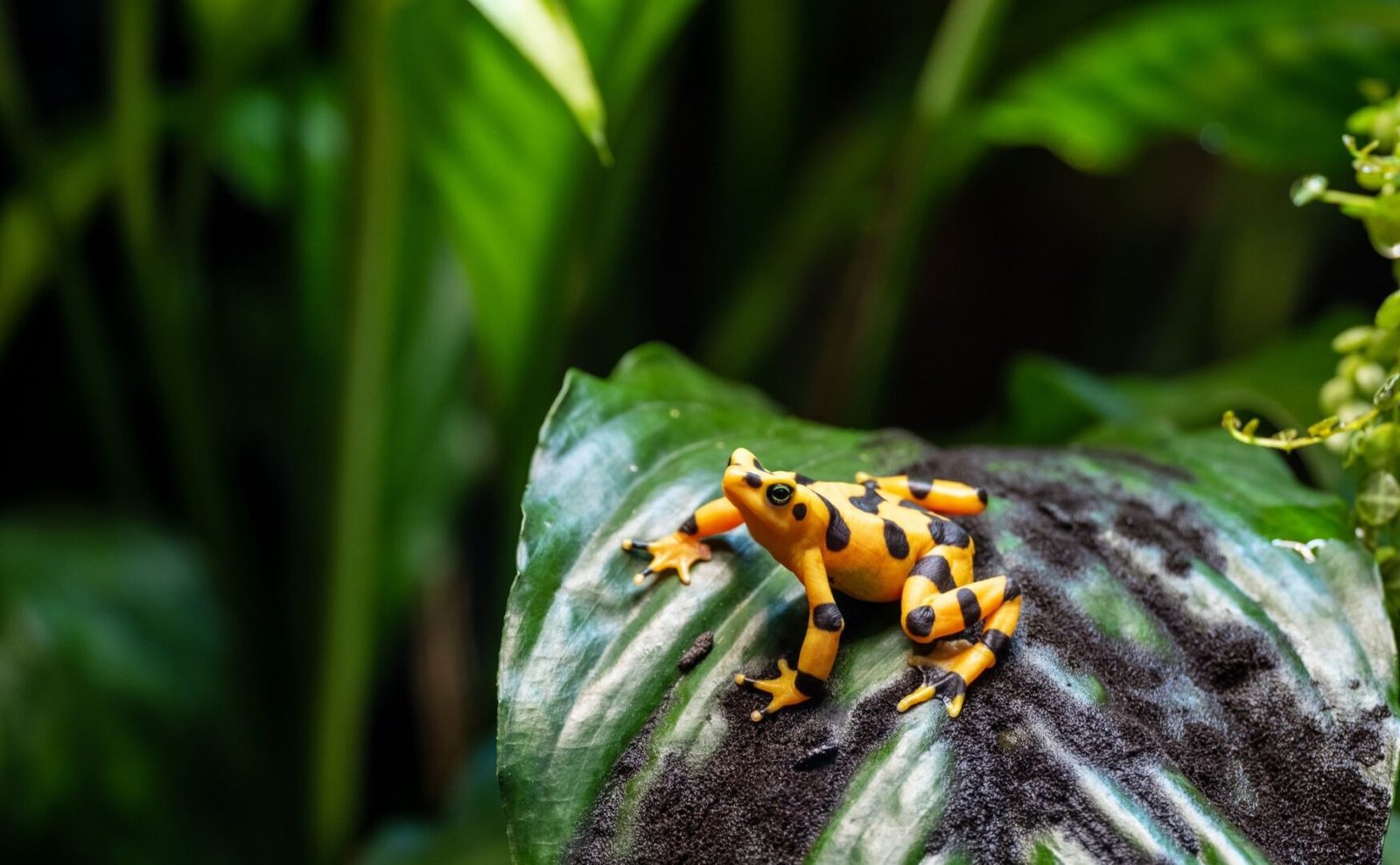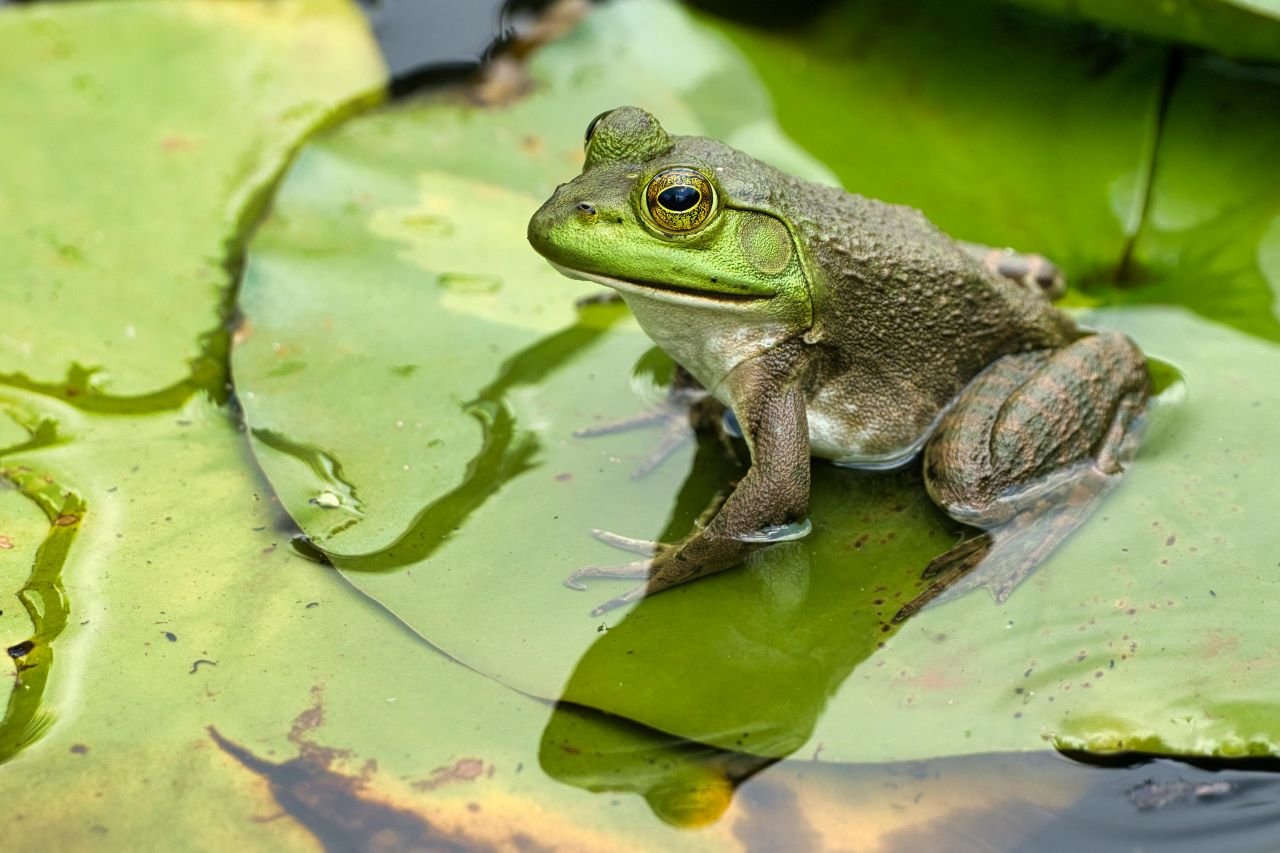Frogs have been around for a very long time. They shared the planet with dinosaurs 200 million years ago, weathered the mass extinction that followed, and adapted to life in trees, deserts, mountaintops, and wetlands. They come in all sizes, from the Goliath frog of Central Africa, reaching over 30 cm long, to Paedophryne amauensis of Papua New Guinea, which is smaller than a grain of rice.
Frogs play a key role in keeping ecosystems healthy and balanced. They are a source of food for many predators and control insect populations which they feed on, including mosquitoes that transmit disease. But today, frogs are facing what seems to be an unescapable threat: a microscopic fungus that is pushing many species towards extinction.

The Panamian golden frog (Atelopus zeteki) is considered extinct in the wild, with chytridiomycosis as a primary cause. Many other species of its genus are presumed extinct in the wild due to infection.
Unlike us, frogs breathe and regulate water through their skin. The fungus Batrachochytrium dendrobatidis, or Bd, infects this surface and disrupts these functions. Infected frogs often suffer cardiac arrest when their skin can no longer maintain essential electrolytes. The disease, named chytridiomycosis, has already impacted over 500 species of amphibians and led to at least 90 confirmed extinctions.
The global spread of this fungal pathogen has been largely driven by international trade in amphibians for pets, research, and food. Species such as the African clawed frog and the American bullfrog have been transported widely and are known carriers of the fungus. In some cases, relatively harmless local strains have come into contact through trade and recombined into more virulent forms, devastating native amphibian populations with no natural resistance.

The American bullfrog (Rana catesbeiana) is a known carrier of the fungus due to international trade as a food item.
Scientists and conservationists have responded to this emergency with a range of measures: building captive breeding programs, managing habitats, and relocating frogs to disease-free sites. These tools have helped some species survive but, in many cases, they are not enough. When frogs return to the wild, they often encounter the fungus again and succumb to the same cycle. To date, there is no effective way to eradicate chytridiomycosis from wild habitats or fully restore susceptible frog species.
This is where genetics offers new hope. In some species, individuals have been observed to survive infection from the disease thanks to traits in their immune systems, skin chemistry, and, most crucially, their genes. My research at the University of Melbourne focuses on harnessing these genetic differences to help save Australia’s frogs from chytridiomycosis, starting with the Critically Endangered Southern Corroboree Frog (Pseudophryne corroboree) – a species that can no longer survive in the wild after the introduction of the chytrid fungus into its environment.

Southern Corroboree frog in a disease-free enclosure in Kosciuszko National Park, NSW. Photograph: Tiffany Kosch.
A central focus of our work is Targeted Genetic Intervention (TGI). Traditionally, conservation breeding programs have aimed to preserve the genetic diversity of founder populations. However, this approach can inadvertently maintain traits that make species vulnerable to chytridiomycosis. TGI takes a different path: instead of simply preserving genetic diversity, it promotes the spread of beneficial traits, like resistance to the fungus, by changing the frequency of specific alleles that impact survival in its presence.
With TGI, we can use genomic technologies to identify which frogs are most likely to survive chytridiomycosis, and then leverage this knowledge to breed frogs that are able to persist in the wild despite the presence of the fungus. Synthetic biology offers the possibility to introduce or enhance specific genes linked to Bd survival, without disrupting other important characteristics.

Tiffany Kosch holding a Southern Corroboree frog in a disease-free enclosure in Kosciuszko National Park, NSW. Photograph: Dan Guinto.
Amphibians are essential to the broader health of ecosystems – yet they are the most threatened group of vertebrates globally. By protecting frogs, we help stabilize food webs, preserve biodiversity and support ecosystem functions. To address the overlapping crises of climate change, pollution and disease that are threatening these precious species, innovative tools are essential. Genetic approaches like TGI are not a replacement for habitat protection or climate action, but they can be a powerful addition to the conservation toolkit, especially as threats intensify and traditional methods alone fall short. New tools derived from synthetic biology, when thoughtfully developed and used, can offer hope, supporting the survival of frogs and of the ecosystems that rely on them to thrive.
